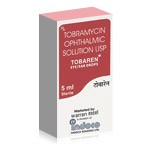Intra-Abdominal Infections: An Overview


Intra-abdominal infections (IAIs) are serious conditions that can occur in various parts of the abdominal cavity, often leading to significant morbidity and mortality if not diagnosed and treated promptly. These infections typically arise from a breach in the normal protective barriers of the abdominal organs, leading to contamination by pathogenic microorganisms. In this article, we will explore the definition, causes, common types, classifications, and treatments of intra-abdominal infections, with particular emphasis on the role of Tobaren in managing these conditions.
What is an Intra-Abdominal Infection?
An intra-abdominal infection is defined as any infection that involves the structures within the abdominal cavity, including the peritoneum, liver, pancreas, intestines, and other abdominal organs. These infections can be localized, affecting one organ or area, or they can be diffuse, affecting a large portion of the abdominal cavity. IAIs are most commonly caused by bacteria, although fungal and viral infections can also play a role, especially in immunocompromised individuals.
The peritoneum, a thin membrane lining the abdominal wall and covering most abdominal organs, plays a crucial role in preventing the spread of infections. When this barrier is disrupted, as seen in conditions like appendicitis, diverticulitis, or trauma, bacteria can enter the abdominal cavity, leading to infection. The symptoms of an intra-abdominal infection often include abdominal pain, fever, nausea, vomiting, and a general sense of illness.
Common Infections in the Abdomen
Intra-abdominal infections can be caused by a variety of factors. The most common infections in the abdomen include:
- Appendicitis – An infection of the appendix, often due to a blockage that leads to inflammation and bacterial growth. If untreated, appendicitis can result in rupture and peritonitis, a severe form of IAI.
- Diverticulitis – Inflammation of the diverticula (small pouches) in the colon, commonly caused by the accumulation of stool and bacteria. Complications can include abscess formation and perforation of the colon.
- Cholecystitis – Inflammation of the gallbladder, often caused by a blockage of the bile duct, leading to bacterial infection. Cholecystitis is frequently associated with gallstones.
- Pancreatitis – Inflammation of the pancreas, which can be caused by alcohol abuse, gallstones, or infections. Severe pancreatitis can result in the development of pancreatic abscesses.
- Peritonitis – Inflammation of the peritoneum, which may occur as a result of infection from a ruptured organ, such as in appendicitis or perforated ulcers. Peritonitis can lead to widespread sepsis and organ failure if not treated promptly.
- Intra-Abdominal Abscesses – These are localized collections of pus that can form due to infections, especially in cases of appendicitis, diverticulitis, or trauma. They can be difficult to treat and often require both antibiotic therapy and surgical intervention to drain the pus.
What Can Cause an Intra-Abdominal Abscess?
An intra-abdominal abscess occurs when bacteria or other pathogens, often from a ruptured organ or perforation, cause localized infection within the abdominal cavity. Several factors contribute to the formation of an intra-abdominal abscess:
- Ruptured Organs – Conditions like a perforated appendix, perforated peptic ulcer, or a burst diverticulum can release bacteria into the abdominal cavity, leading to an infection that forms an abscess.
- Bacterial Overgrowth – When normal gastrointestinal bacteria proliferate beyond their usual locations, they can lead to infection. This may occur in cases of bowel obstruction or post-surgical complications.
- Foreign Bodies – The introduction of foreign objects, such as surgical instruments or contaminants during trauma, can lead to localized infections and abscess formation.
- Chronic Conditions – Certain conditions, such as Crohn’s disease, can increase the risk of abscess formation within the abdominal cavity due to chronic inflammation and infection.
An intra-abdominal abscess can range in severity from mild to life-threatening. Symptoms include persistent abdominal pain, fever, chills, nausea, and vomiting. If left untreated, abscesses can rupture, leading to peritonitis and widespread infection.
Classifications of Intra-Abdominal Infections
IAIs are classified into several categories based on their location, severity, and the patient’s underlying health. These classifications help guide treatment decisions and determine the need for surgical intervention.
- Community-Acquired Intra-Abdominal Infections (CAIA) – These are infections that occur outside of healthcare settings, often due to conditions like appendicitis, diverticulitis, or perforated ulcers. They tend to involve a broader range of bacterial pathogens and require treatment with a combination of antibiotics that target both aerobic and anaerobic organisms.
- Healthcare-Associated Intra-Abdominal Infections (HAIA) – These infections occur in patients who have recently been hospitalized or undergone abdominal surgery. They may involve more resistant strains of bacteria and require more potent or broad-spectrum antibiotics. Surgical interventions may also be necessary in these cases.
- Complicated Intra-Abdominal Infections (CIAI) – Complicated infections are those that involve abscesses, perforations, or sepsis. These infections often require both medical and surgical management and can result in significant complications, including organ failure and death if not managed properly.
- Uncomplicated Intra-Abdominal Infections (UIAI) – These are infections that are localized and do not involve abscesses, perforations, or sepsis. Uncomplicated infections can typically be treated with antibiotics alone, and surgical intervention may not be required.
Most Common Bacteria in Intra-Abdominal Infections
The majority of IAIs are caused by bacteria, with a mix of both aerobic and anaerobic organisms. The most common bacterial pathogens involved in intra-abdominal infections include:
- Escherichia coli (E. coli) – E. coli is the most commonly isolated pathogen in both community-acquired and healthcare-associated IAIs. It is primarily found in the colon and is a major contributor to infections such as appendicitis and diverticulitis.
- Bacteroides species – These anaerobic bacteria are often involved in abscess formation and infections in the colon. They are particularly important in complex IAIs, where anaerobic conditions prevail.
- Streptococcus species – Streptococci, including group A and viridans streptococci, are common causes of IAIs, particularly in cases of peritonitis or abscess formation.
- Enterococcus species – These bacteria are part of the normal intestinal flora and can be involved in infections following surgical procedures or in patients with pre-existing conditions such as inflammatory bowel disease.
- Klebsiella pneumoniae – This pathogen is often seen in healthcare-associated IAIs, especially in patients with compromised immune systems or after abdominal surgery.
- Pseudomonas aeruginosa – Pseudomonas can cause severe infections in patients who are immunocompromised or have undergone surgery. It is more resistant to antibiotics, which can complicate treatment.
The Role of Tobaren in the Treatment of Intra-Abdominal Infections
Tobaren (tobramycin) is an aminoglycoside antibiotic that plays a significant role in treating intra-abdominal infections, particularly in patients with complicated or healthcare-associated infections. It is a broad-spectrum antibiotic that targets gram-negative bacteria, such as E. coli and Pseudomonas aeruginosa, both of which are common culprits in IAIs.
Tobaren is especially valuable in severe cases where multi-drug-resistant organisms are suspected, or when an infection involves a pathogen resistant to other antibiotics. It is often used in combination with other antibiotics to provide broader coverage against both aerobic and anaerobic bacteria. In cases where surgery is required to drain abscesses or repair perforations, Tobaren can be used as adjunctive therapy to reduce bacterial load and prevent further complications.
In addition to its effectiveness against gram-negative pathogens, Tobaren is known for its relatively low toxicity when used in appropriate doses, making it a preferred option in many clinical settings. However, like other aminoglycosides, Tobaren requires careful monitoring of kidney function and serum drug levels to avoid nephrotoxicity and ototoxicity.
Conclusion
Intra-abdominal infections are a diverse and serious group of conditions that can range from mild to life-threatening. Prompt diagnosis and appropriate treatment are crucial to preventing complications such as abscess formation, sepsis, and organ failure. Understanding the causes, classifications, and bacterial pathogens involved in IAIs is essential for effective management. Antibiotics like Tobaren play a critical role in treating these infections, particularly in complicated or healthcare-associated cases. With timely intervention, many patients can recover from intra-abdominal infections, although the condition remains a significant clinical challenge.
Medically Reviewed by Dr. Rabeea Aboufakher, MD
(Updated at Jul 9 / 2025)

